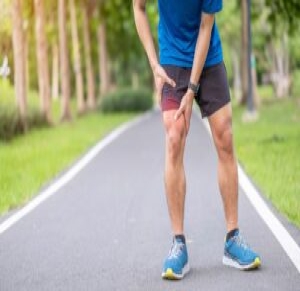You’ve probably heard of Iliotibial Band Syndrome (ITBS) – an extremely common and often painful overuse injury among runners and athletes. ITBS occurs when the iliotibial band (the ligament that runs down the outside of the thigh from the hip to the shin) becomes tight or inflamed. The IT band attaches to the knee and helps stabilize and move the joint. When the IT band isn’t working properly, movement of the knee (and, therefore, running) becomes painful. IT band pain can be so painful that it can completely sideline an athlete for weeks, sometimes longer.
Symptoms
The symptoms of ITBS syndrome consist include pain on the outside of the knee, specifically around the lateral epicondyle of the femur.
It can flare up at certain times during a run and gradually become worse, sometimes forcing the athlete to stop exercising completely. After a period of rest the pain may fade, only to return when exercise starts again. The pain is normally aggravated by running, particularly downhill.
Pain may be felt when bending and straightening the knee which may be made worse by pressing in at the side of the knee over the sore area. There might be tightness in the iliotibial band which runs down the outside of the thigh. When seeing a specialist like a Podiatrist he/ she may use Ober’s test to assess this. Weakness in hip abduction or moving the leg out sideways is another common sign. Tender trigger points in the gluteal muscles or buttocks area may also be present.
Causes of Iliotibial Band Syndrome
ITBS can result from any activity that causes the leg to turn inward repeatedly. This can be as simple as wearing poor footwear, running downhill or on banked surfaces, running too many track workouts in the same direction, or simply running too many miles. Unlike many overuse injuries, IT band pain afflicts seasoned runners almost as much as beginners. When the iliotibial band comes near the knee, it becomes narrow, and rubbing can occur between the band and the bone. This causes inflammation.
Treatment for Iliotibial Band Syndrome
Treatment for the ITB aims to reduce pain and inflammation. Post-treatment one should aim to stretch and condition the muscles so the injury does not recur when returning to full fitness.
Rest
You’ve heard this before – rest is significant to allow the inflamed tendon to heal. Continuing to play sports or run with ITB syndrome will likely result in more pain and extended recovery times. When the issue first begins complete rest is recommended, then light (and non-weight bearing movements if possible) is recommended. Additional actions can alleviate pain include:
Cold Therapy: Apply cold therapy or ice to reduce pain and inflammation. Ice should be applied for 10 to 15 minutes every hour until initial pain has subsided.
Medication: Your doctor may prescribe anti-inflammatory medication. This is useful in the early acute stage to reduce pain and inflammation.
Sports massage: A professional therapist may perform sports massage to help relax and loosen the tissues and use myofascial release techniques which have been shown to be highly effective. If you have a foam roller this can also help with excessive tightness.
Stretching exercises: Stretching the muscles on the outside of the hip in particular are important. The tensor fascia latae muscle is the muscle at the top of the IT band and if this is tight then it can cause the band to be tight increasing the friction on the side of the knee.
Strengthening exercises: Improving the strength of the muscles on the outside of the hip which abduct the leg will help prevent the knee from turning inwards when running or walking and therefore help reduce the friction on the ITB tendon at the knee.
Rehabilitation
A comprehensive rehabilitation strategy that includes a balance of stretching and exercise to strengthen the hip abductors is important. In acute or prolonged cases cortisone and/ or prolotherapy injections may provide pain relief.
Dr. Bagwe is a leading orthopedic surgeon specializing in ankle and foot reconstruction. If you are looking for an orthopedic surgeon near you then look no further. Dr. Bagwe is an industry leader when it comes to foot and ankle surgery doctors in St. Louis. Dr. Bagwe and his friendly and professional team is ready to welcome you and tell you everything you need to know.
Reach out and contact us today.






